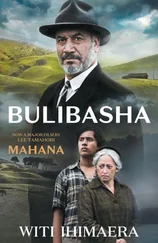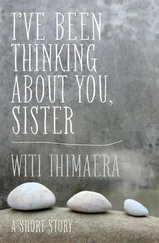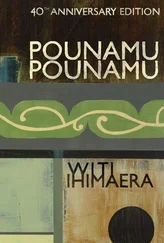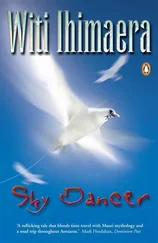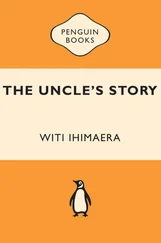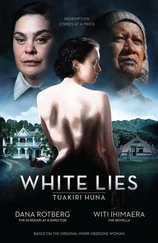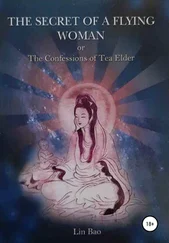Do you get the picture now?
Thus, with the Pakeha wars — at least the effective fighting — to all intents and purposes over in the Taranaki, Te Whiti and Tohu moved swiftly. They formally established themselves as the owners of ‘Maori territory’ and facilitators for the return of disputed Maori land.
Why did they take up this leadership role?
The answer was that the wars in the Taranaki had taken a huge toll on Maori tribal leadership. This may sound cynical, but there was a reason why European generals sat on their white horses and sent younger soldiers onto the battlefield: if they became cannon fodder or fell to withering enemy fire, the generals could carry on, no matter how bad they were as leaders. Not so Maori chiefs.
Thirty Maori leaders were killed in one battle alone, at Waireka in 1860, and Te Karopotinga o Taranaki harvested many others. But Te Whiti and Tohu’s strategy was not to continue leading by the sword. In 1869, therefore, they summoned all Taranaki tribes to meet at Parihaka and, there, they unfolded a new plan.
The proposition was unveiled on the day that we call ‘the first Ra’. It was the day of prophecy, the Takahanga, marking the occasion when the two prophets stepped up to the plate and took upon themselves the roles as leaders of our eventual resurrection as tangata w’enua, the original people of the land. On that day the world held its breath as the prophet Te Whiti proclaimed Maori freedom from Pakeha authority.
‘This land is ours,’ he said.
Clouds had gathered above Taranaki and from the guts of the earth came a sudden quake — a quivering of anticipation. Birds arrowed sharply through the air and the bullocks were bellowing.
Then Te Whiti made an astounding proclamation. Certainly there would continue to be struggles with the Pakeha, but Maori would participate unarmed .
‘We will hold the land by passive resistance,’ he said.
Te Whiti and Tohu’s positions may have been firm, but the government had given itself wriggle room.
Hazel Riseborough cleverly puts it this way:
The Government had confiscated the land on paper, but it did not have the means to enforce confiscation on the ground, and for the time being the people at Parihaka were left in peace to cultivate their land . [4] Hazel Riseborough, ‘A New Kind of Resistance’ in Kelvin Day (ed.), Contested Ground: Te Whenua i Tohea — The Taranaki Wars 1860–1881 , Huia, 2010, p. 233.
I don’t like the sound of that ‘for the time being’, do you?
Yes, for the time being .
During that peaceful interval, Erenora and Horitana settled into married life. He was astounded at the growth of Parihaka and the great leadership skills of Te Whiti and Tohu.
‘When I left you,’ he said to Erenora, ‘I was just a young boy and you were still at Warea.’ He was sitting with her, watching the tataraki’i as they sent kites dancing into the air. ‘And now, from out of the ground where once there was nothing, has arisen Parihaka.’
Horitana was welcomed into the village with open arms. From the very moment he returned, Te Whiti sought him out too, even though the prophet was, initially, cautious. ‘You have been fighting so long with Titokowaru,’ he began. ‘Parihaka might not be for you.’
‘Rangatira,’ Horitana answered, his eyes haunted, ‘I have witnessed many dreadful things and I myself have killed men in the name of war, I acknowledge that. I have shot them and seen them fall in the battlefield without knowing who they were. And yes, I admit that the bloodlust has come upon me when I have witnessed terrible acts of butchery: soldiers taking heads from our warriors because of the beauty of their moko. That has only made me rage all the more, and to fight at close quarters with them, kano’i ki te kano’i, face to face.
‘But always, when I have slid my bayonet into their hearts and their blue eyes have gone white, I have realised just what it means to take the life of another. How I have clasped them to my breast and grieved for them.’
‘Are you therefore able to put that life behind you and ascend the whirlwind path of Enoch?’ Te Whiti asked.
Horitana swayed, cried out in great pain and nodded. ‘I am still a young man. If God will forgive me, I will work for Him.’ He kissed Te Whiti’s hands. ‘Let me serve Him here in Parihaka and ensure that the kainga truly becomes the citadel where peace can reign.’
So it was that, one bright morning, Te Whiti took Horitana to the stream. Erenora, Huhana and other villagers stood on the banks to watch the baptism.
‘Look!’ Huhana gasped pointing. Eels were swirling around the two men.
Dressed in white, Te Whiti baptised Horitana, submerging him in the water. ‘In the name of the Father, the Son and the Holy Ghost,’ he intoned, ‘arise from the water washed of your sins.’
When Horitana came out of the stream he sat on the bank, weeping. Then, crying out with passion, he walked swiftly to his and Erenora’s house, where the Enfield rifle was hanging in its pouch. He took it out into the front yard and swung it by the barrel against a fencepost, slamming it until the stock splintered and broke.
‘Husband, calm yourself,’ Erenora said to him as he stood, panting.
‘How was I to know, Erenora?’ he asked, grief-stricken. ‘Nobody as young as I was should ever go to war.’
She cradled him in her arms, soothing him.
Let me show you a photograph of Erenora and Horitana.
I’m not sure what year it was taken — it must have been after their marriage — and it gives a good indication of what they looked like when they were young.
The photographer is anonymous, but he could have been one of the Burton brothers, though if that were the case, why is the photograph not listed in their collection at Te Papa Tongarewa? That question aside, the photographer was like many others of his profession, compelled to capture pictures of the bold villagers who would eventually stand against the might of the Pakeha world.
The subject of the photograph is actually Parihaka itself, but the photographer has managed to inveigle a large group of villagers to pose for him just outside the settlement. It looks like he has found a rise outside the village — or he’s taken the photograph while standing on a tall ladder — on the outer side of the road leading to Parihaka. From this vantage point, the photograph shows the fence perimeter of the village, broken by a large gap that was one of the entrances to Parihaka. It’s not a gateway — there’s no gate — but I’ll call it a gateway anyhow, and the villagers are standing in front of it: eighteen of them in the foreground, six men and twelve women, three holding babies in their arms. There are eight more villagers in the middle distance, standing in a thoroughfare that runs between thatched houses, and way at the back are two men.
Most of the subjects in the photograph are women. The two in the front are Erenora’s sisters, Ripeka and Meri. You can tell, by her overflowing beauty, that the one on the left is Ripeka; on the right, looking at her sister for reassurance, is Meri, always a little uncertain of herself, holding poi in her hands, tap tap tap, tap tap tap.
All the villagers, with the exception of Meri, are looking into the camera. They appear to be saying, ‘Tenei matou, this is us.’ They aren’t taciturn and they don’t look belligerent. Most of the men are wearing light-coloured trousers and shirts or jerkins, dark jackets, and all have hats. The women wear blouses and long, full skirts to their ankles. It must be cold as a few have wrapped blankets around their shoulders — and the babies have shawls to protect them from the wind. Like the men, some of the women wear hats too.
Читать дальше


